Blog
Ao Dai: The Elegance Of Vietnamese Traditional Dress
The Vietnamese traditional dress, known as the Áo Dài, is a cultural icon that represents the grace, elegance, and identity of Vietnam.
With a history that spans centuries, the Ao Dai has not only become a national symbol but also a global ambassador of Vietnamese culture. This article explores the history, cultural significance, craftsmanship, styling, and modern-day relevance of this beautiful garment.
The Cultural Significance of the Ao Dai
The Ao Dai holds a special place in the hearts of the Vietnamese people, symbolizing their pride and connection to their heritage. As the most recognized Vietnamese cultural dress, it is worn during various important occasions, including weddings, Lunar New Year celebrations (Tet), and religious ceremonies.
A Dress for Both Men and Women
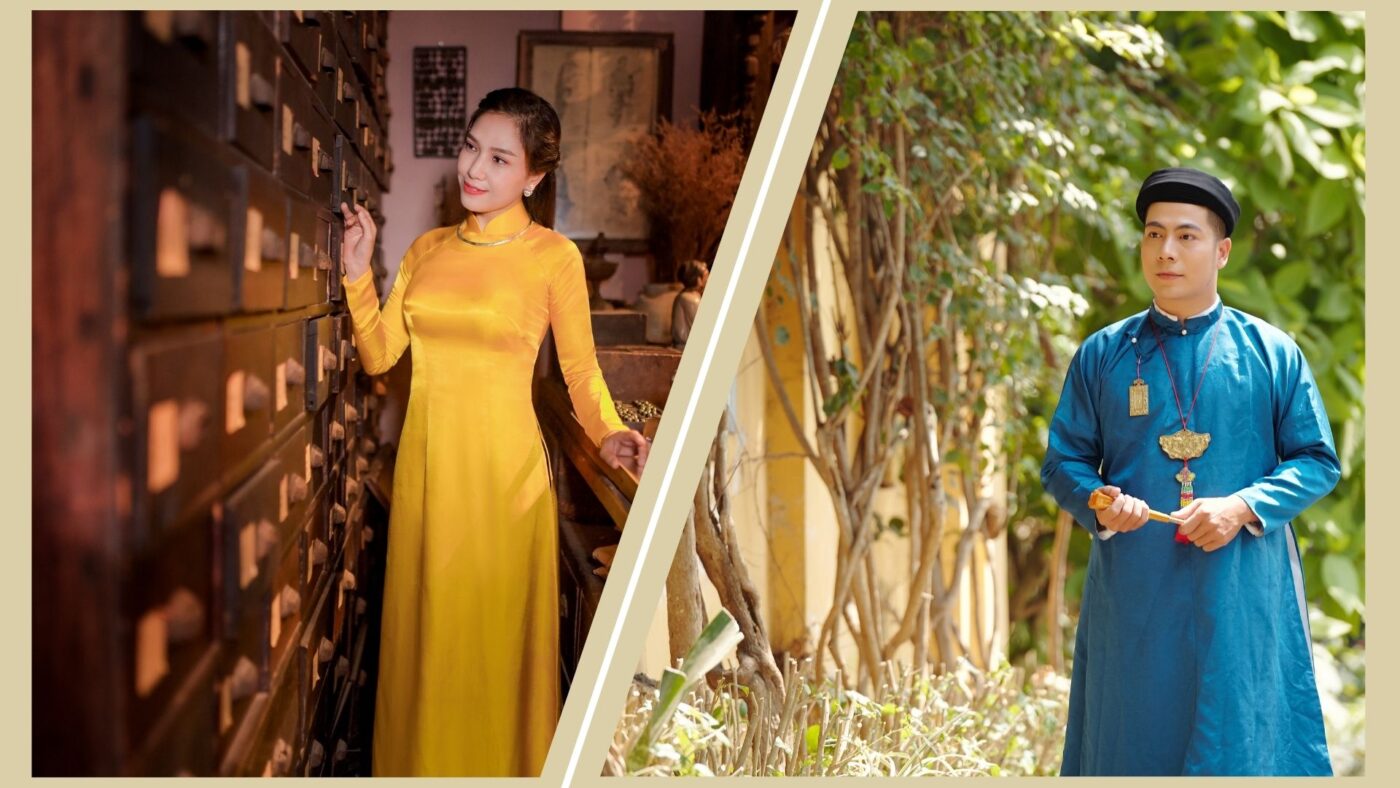
While most people associate the Ao Dai with women, it is also a Vietnamese traditional dress male version, which is less common but equally significant. Men typically wear Ao Dai for formal events, with designs that are simpler and more structured compared to the flowing and colorful versions worn by women.
Representation of Femininity and Elegance
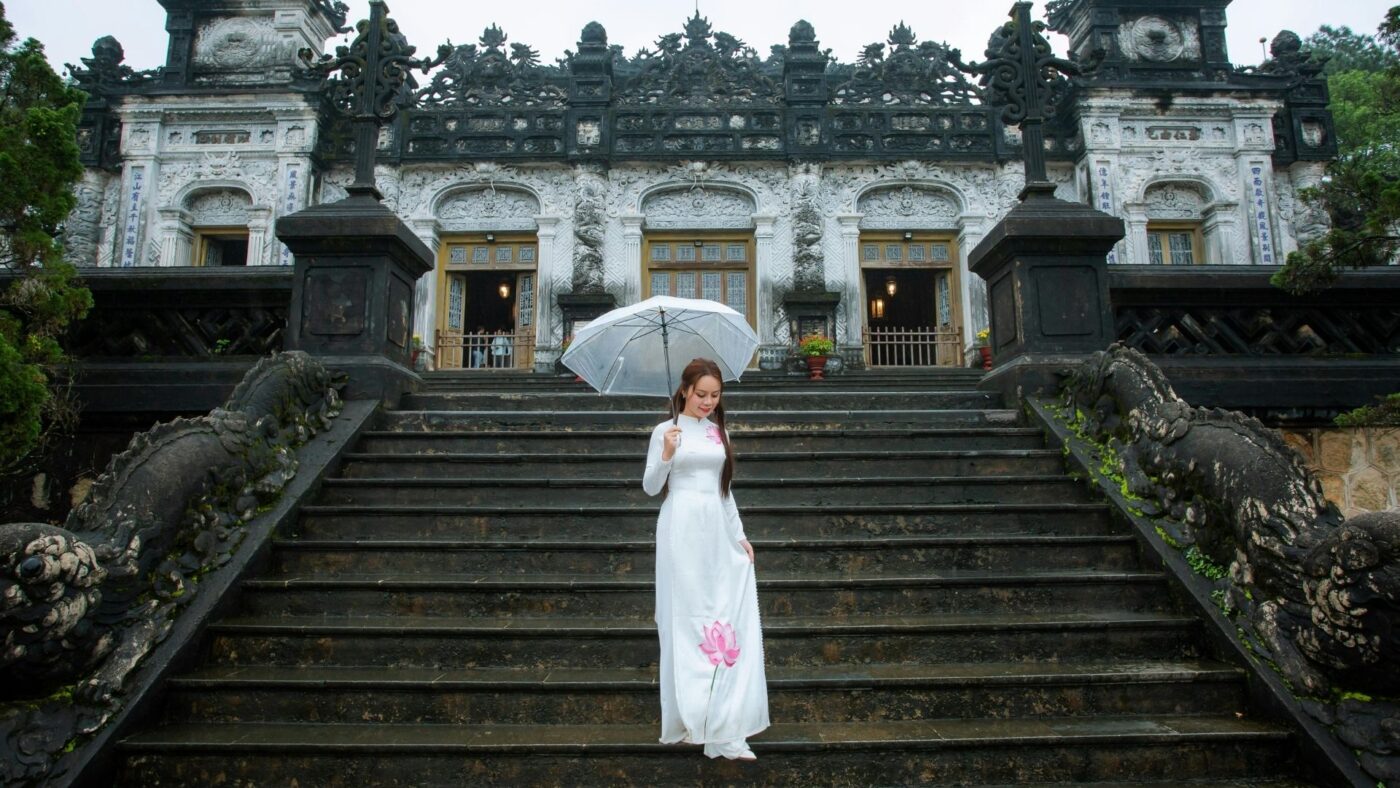
For women, the Ao Dai is more than just clothing—it is a Vietnamese traditional dress female that highlights the wearer’s grace and elegance. The long, flowing tunic and fitted pants create a silhouette that is modest yet flattering, reflecting traditional Vietnamese values.
The History and Evolution of the Ao Dai
The Ao Dai, as we know it today, has undergone significant transformations over time. Its origins can be traced back to historical Vietnamese clothing from the Nguyễn Dynasty in the 18th century.
Early Forms of the Ao Dai
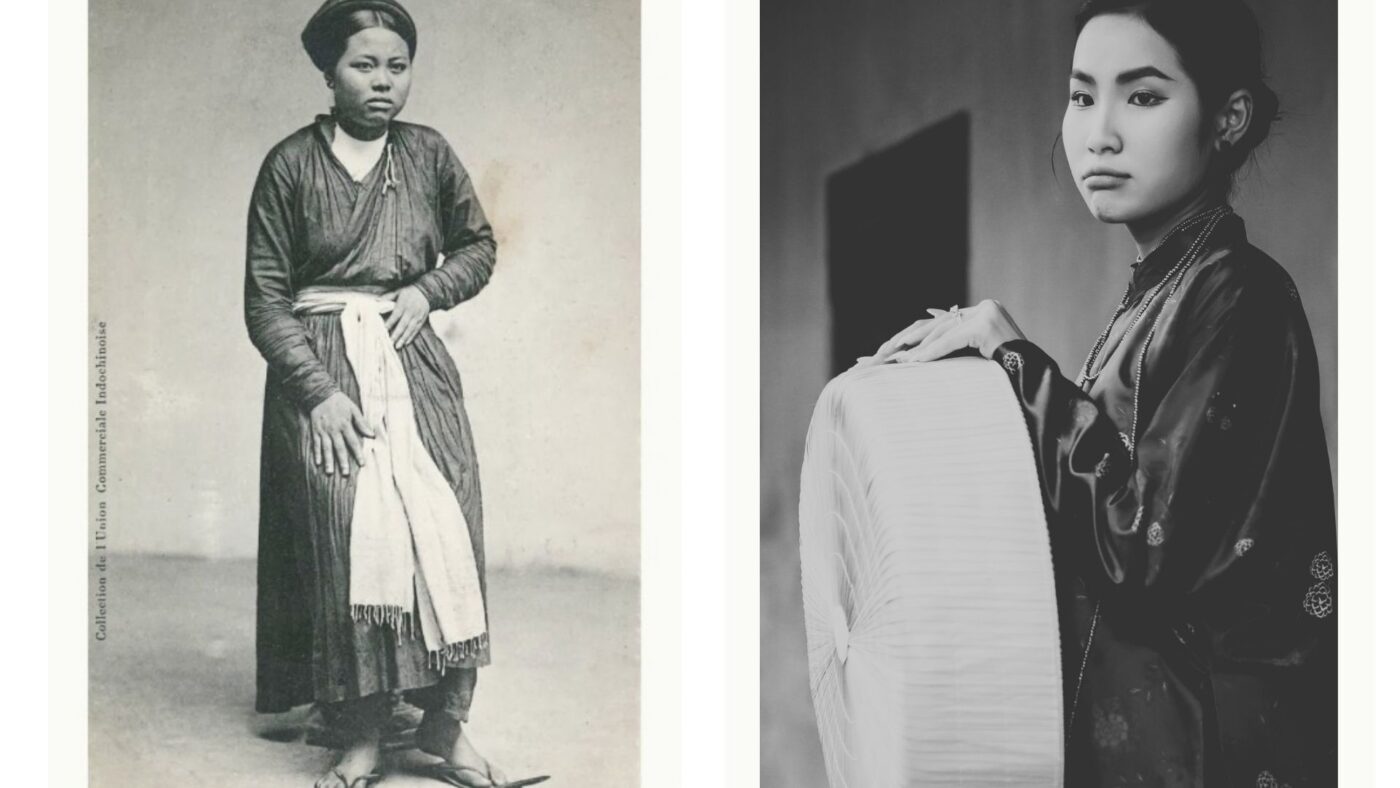
The earliest versions of the Áo Dài were influenced by Chinese fashion, particularly the Áo Giao Lĩnh, a cross-collared robe. Over time, the design evolved to reflect Vietnamese aesthetics, including the addition of long slits along the sides for better mobility and comfort.
The Modern Ao Dai
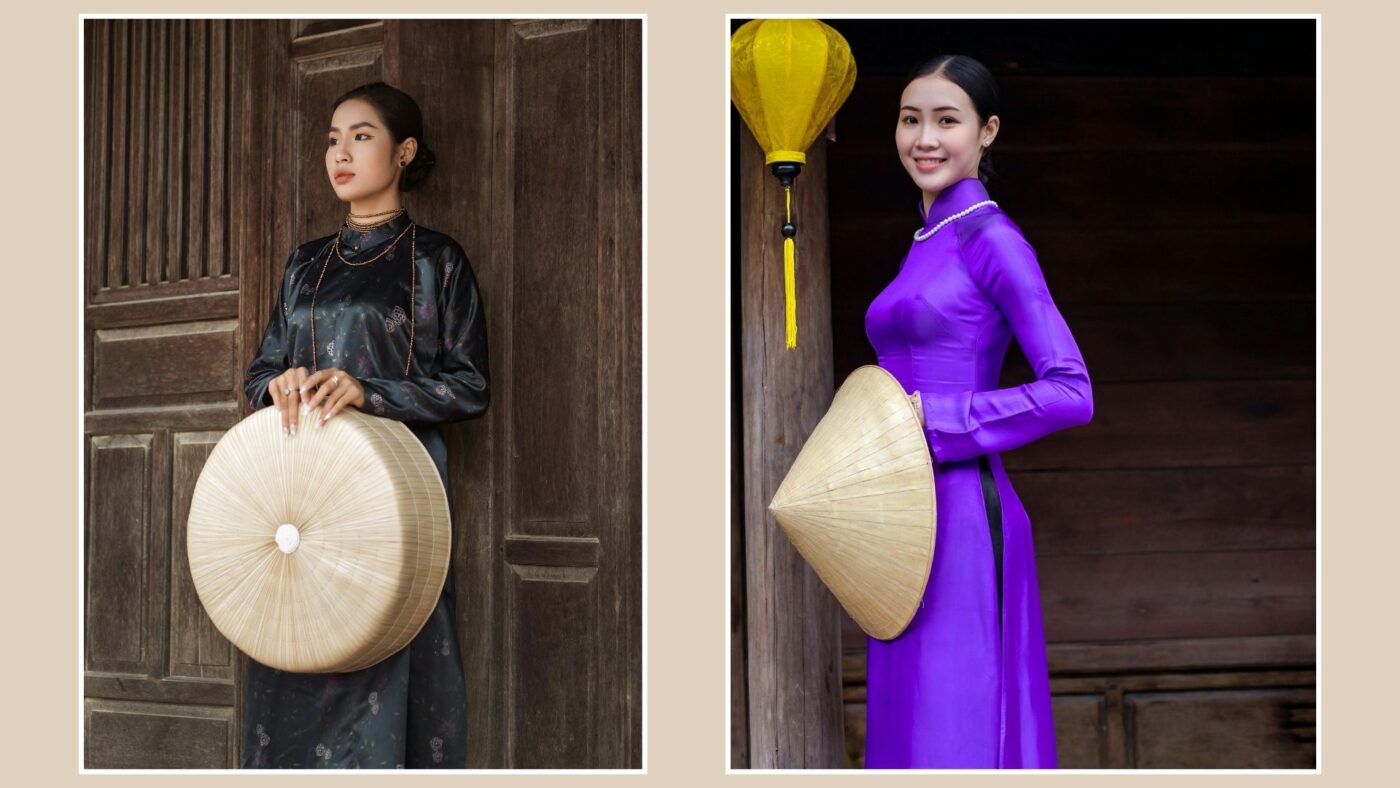
In the 1930s, Vietnamese designer Cát Tường (also known as Le Mur) introduced a modernized version of the Ao Dai. This design, inspired by Western tailoring techniques, featured a more form-fitting silhouette. Today, the Ao Dai continues to evolve, blending traditional elements with contemporary fashion trends.
Regional Variations
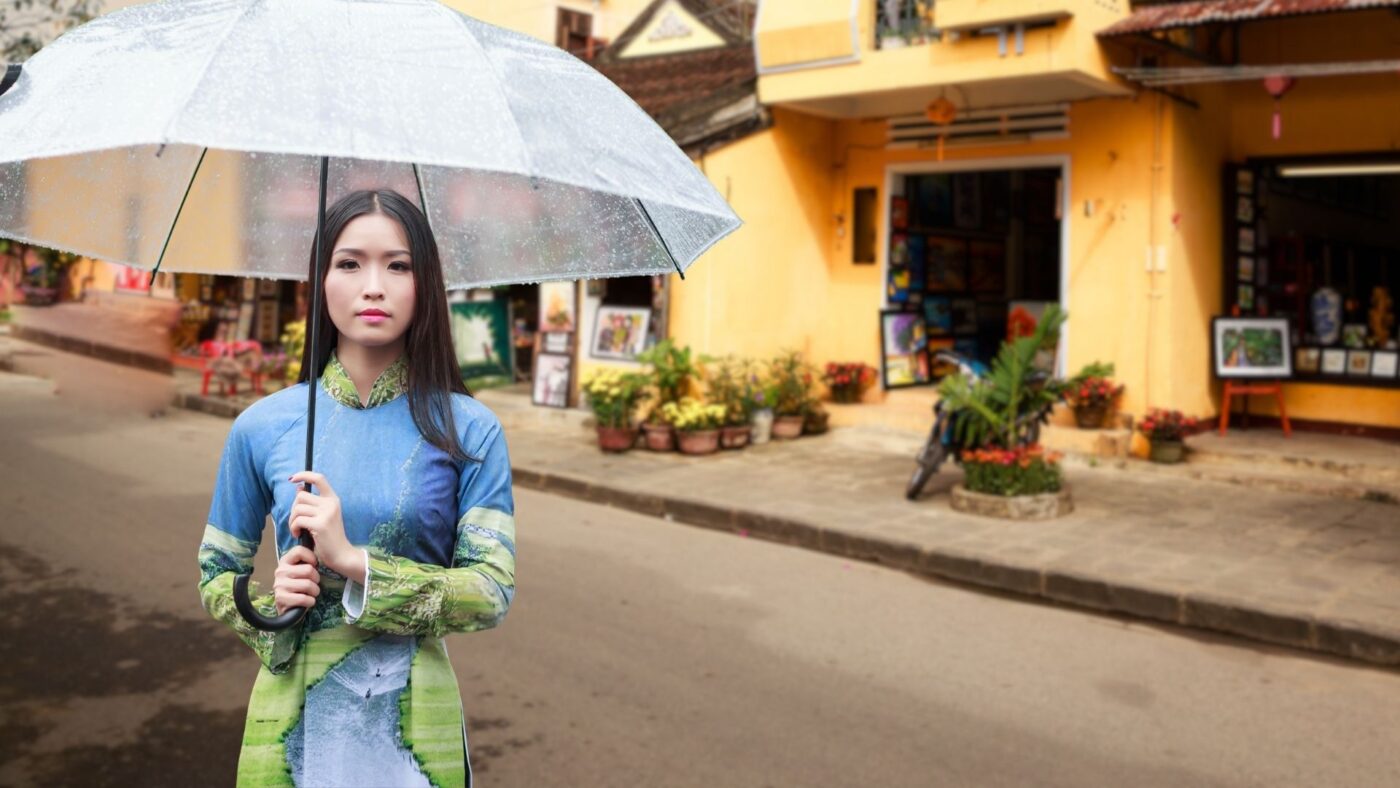
The Ao Dai also exhibits regional differences across Vietnam:
Northern Vietnam: The designs are often more conservative, with muted colors and traditional patterns.
Central Vietnam: Known for its elegance, the Ao Dai in this region often features intricate embroidery and luxurious fabrics.
Southern Vietnam: The designs are typically more vibrant and colorful, reflecting the lively culture of the south.
Craftsmanship of the Ao Dai
Creating an Ao Dai is a meticulous process that requires skill and attention to detail. Each piece is tailored to fit the wearer perfectly, as the beauty of the Ao Dai lies in how it complements the body.
Fabric Choices

The Ao Dai is often made from luxurious fabrics such as silk, satin, or brocade. These materials not only enhance the elegance of the dress but also ensure comfort in Vietnam’s tropical climate. For special occasions, velvet is sometimes used to add a sense of grandeur.
Embroidery and Patterns
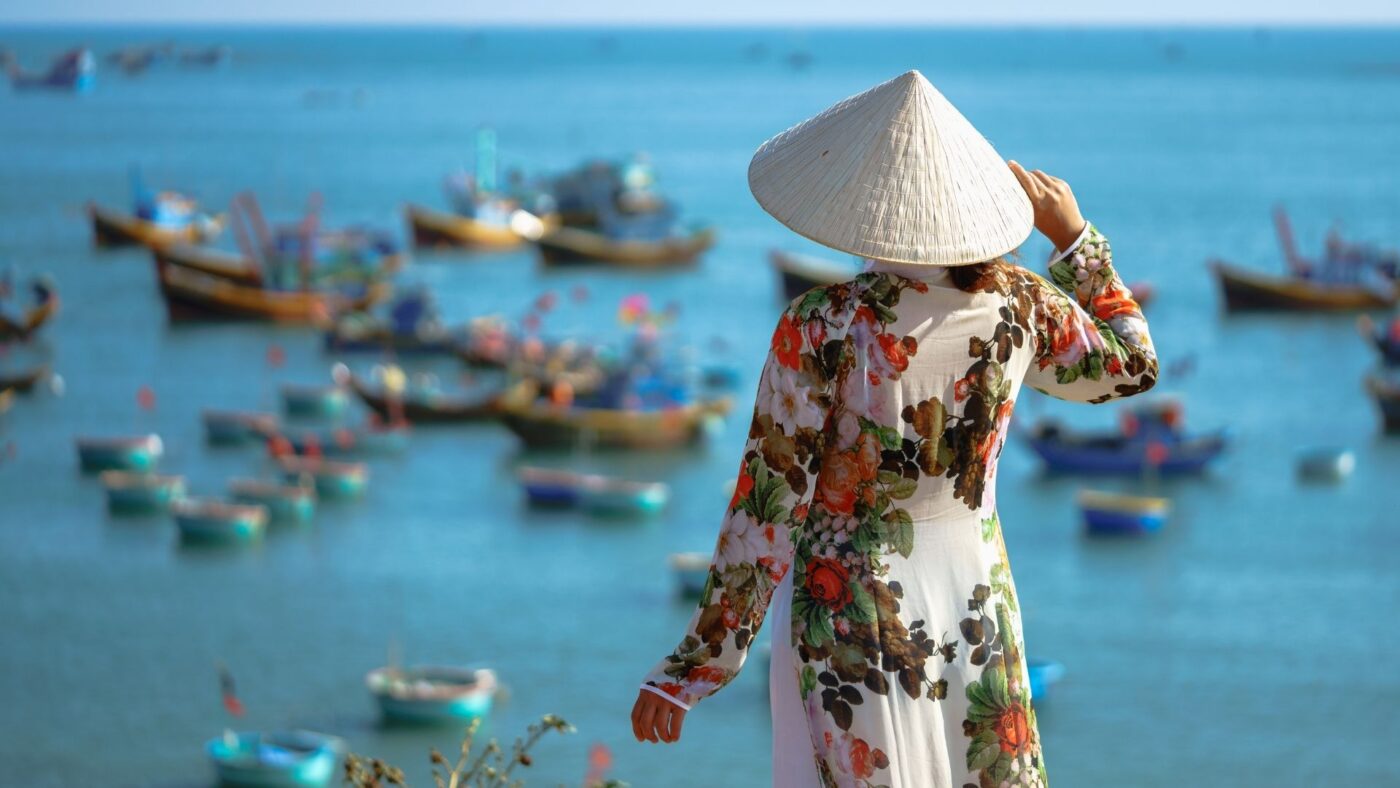
The Ao Dai is frequently adorned with intricate embroidery and patterns that hold cultural significance. Common motifs include:
Lotus flowers: Representing purity and strength.
Dragons and phoenixes: Symbols of power, nobility, and harmony.
Bamboo or rice fields: Paying homage to Vietnam’s agrarian roots.
Styling the Ao Dai
Whether it is the traditional Vietnamese dress female or the Vietnamese traditional dress male, the Ao Dai can be styled in various ways to suit different occasions.
Traditional Styling
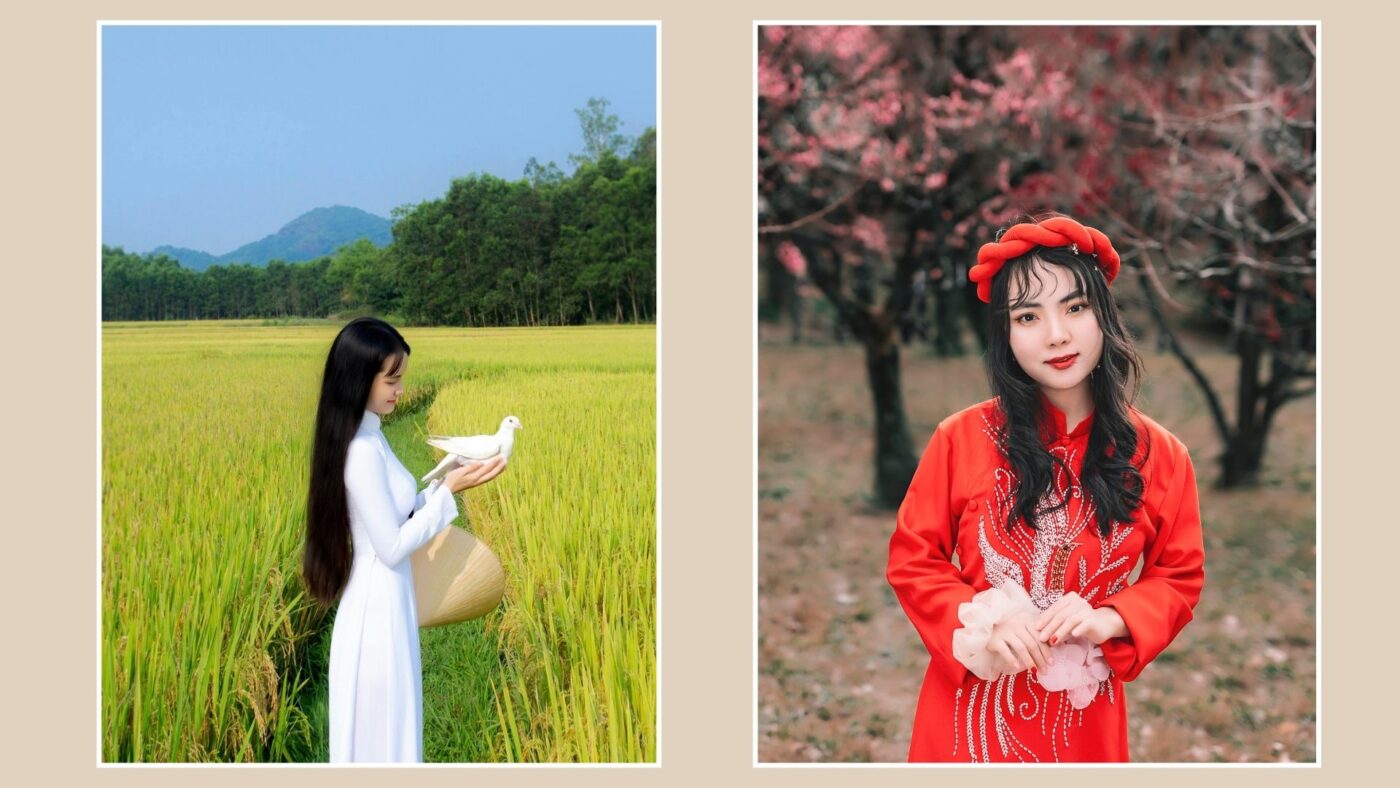
The classic Ao Dai features a long, fitted tunic with high slits on the sides, paired with wide-legged pants. Women often wear white Ao Dai as a symbol of purity, especially for school uniforms or religious events. Red Ao Dai is commonly worn by brides at weddings, symbolizing luck and happiness.
Modern Variations
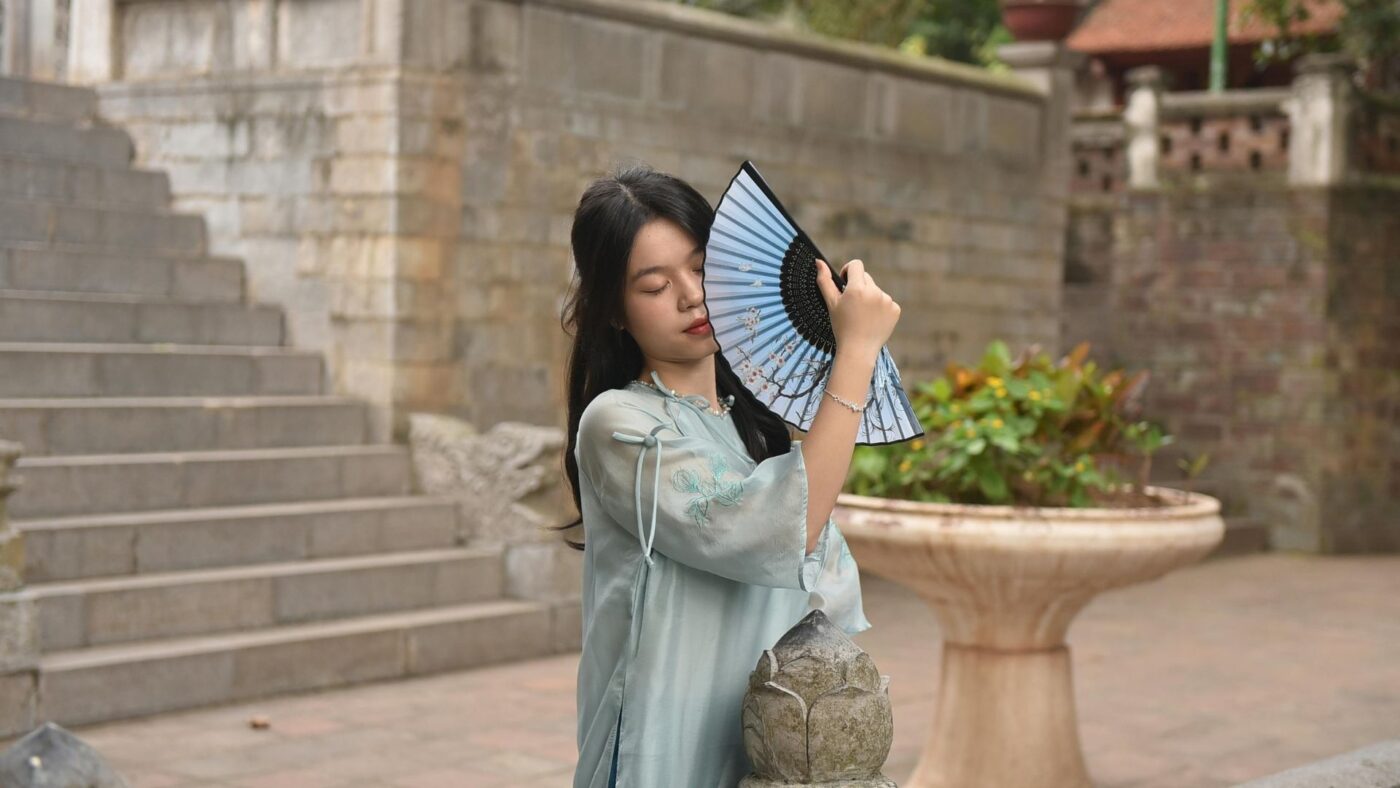
In recent years, designers have introduced modern of the Ao Dai, shorter tunics, bolder colors, and unconventional fabrics. These designs cater to younger generations who want to embrace their heritage with a contemporary twist.
Accessories
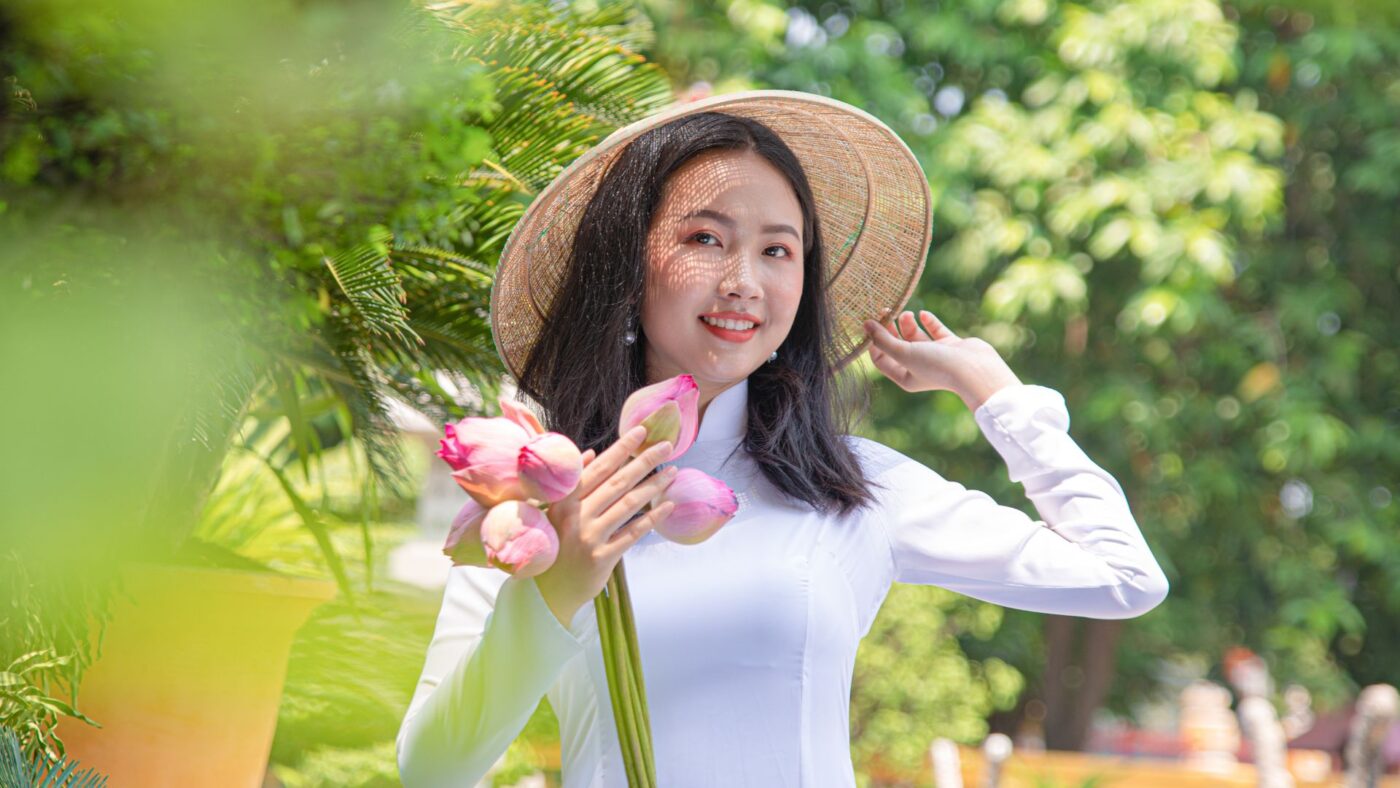
To complete the look, the Ao Dai is often paired with accessories such as:
- Nón lá (conical hat): A traditional accessory that enhances the elegance of the Ao Dai.
- Scarves or shawls: Added for a touch of sophistication.
- Jewelry: Simple earrings or necklaces to complement the outfit without overshadowing its beauty.
Ao Dai in Art, Media, and Global Recognition
The Ao Dai is not only a Vietnamese cultural dress but also a source of inspiration for artists, filmmakers, and fashion designers.
In Vietnamese Art
The Ao Dai has been immortalized in countless paintings, photographs, and poems. It is often depicted as a symbol of Vietnamese femininity and grace.
In Film and Media
The Ao Dai frequently appears in Vietnamese films and music videos, showcasing its role in the country’s cultural identity. Internationally, it has been featured in global fashion shows, highlighting its timeless appeal.
Global Recognition
As a Vietnamese traditional dress, the Ao Dai has gained worldwide recognition. Celebrities and designers from around the globe have embraced its elegance, bringing attention to Vietnam’s rich cultural heritage.
How to Wear and Care for an Ao Dai
Owning an Ao Dai comes with the responsibility of maintaining its beauty and longevity.
Tips for Wearing the Ao Dai
- Ensure a proper fit: The Ao Dai is designed to be form-fitting, so tailoring is essential.
- Layer appropriately: Many women wear an undershirt or slip for added modesty, especially with lightweight fabrics.
Caring for the Ao Dai
Wash with care: Hand-wash delicate fabrics like silk and satin to avoid damage.
Store properly: Hang the Ao Dai on padded hangers to maintain its shape and prevent wrinkles.
Where to Buy or Tailor an Ao Dai
Finding the perfect Ao Dai can be a memorable experience, whether you are in Vietnam or shopping online.
Local Tailors
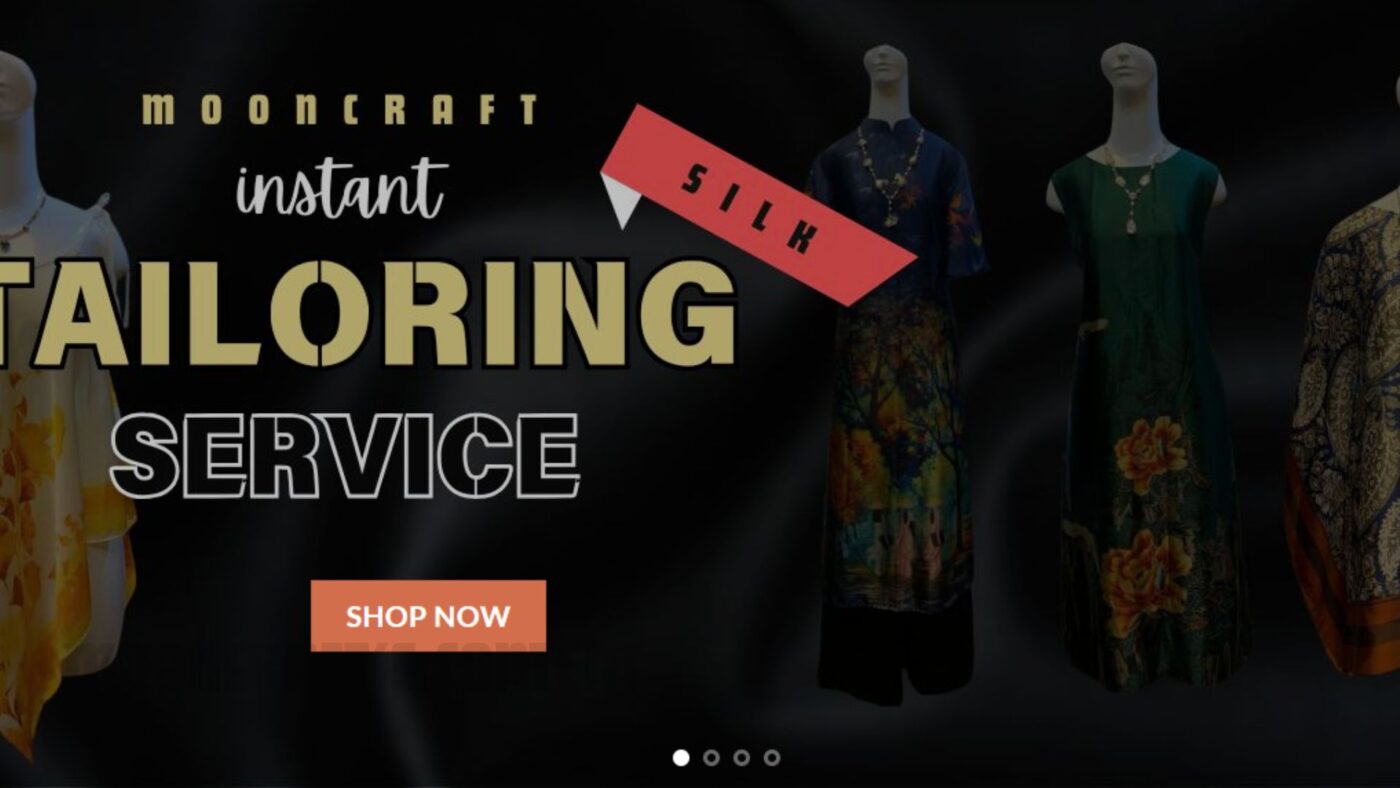
Vietnam is home to countless talented tailors who specialize in Ao Dai. Cities like Hanoi, Ho Chi Minh City, and Hoi An are famous for their bespoke tailoring services, where you can customize your dress down to the smallest detail.
If you visit Hanoi or Hoi An, you can find modern, fashionable Ao Dai designs at:
- MoonCraft – 101 Hang Gai, Hang Trong, Hoan Kiem, Ha Noi, Vietnam 110911 – (+84)919751399
- Mit Souvernir – 40 Cong Nu Ngoc Hoa, Hoi An Ancient Town, Quang Nam, 51306 – (+84)778489710
Online Shopping
For those outside Vietnam, many online stores offer ready-made Ao Dai or customization options. Ensure you provide accurate measurements for the best fit.
At MoonCraft, we provide modern Ao Dai products with all sizes for women. In addition, if you want to tailor Ao Dai according to personal measurements to get the perfect size, the most beautiful for yourself, we are always ready with instant tailoring service.
Fun Facts About the Ao Dai
- The Ao Dai was once banned during certain historical periods, as it was seen as a symbol of old traditions.
- The world’s longest Ao Dai, measuring over 100 meters, was created to celebrate Vietnamese culture.
- It is not unusual for Vietnamese students to wear a white Ao Dai as their school uniform, symbolizing youth and purity.
Ao Dai as a Modern Icon
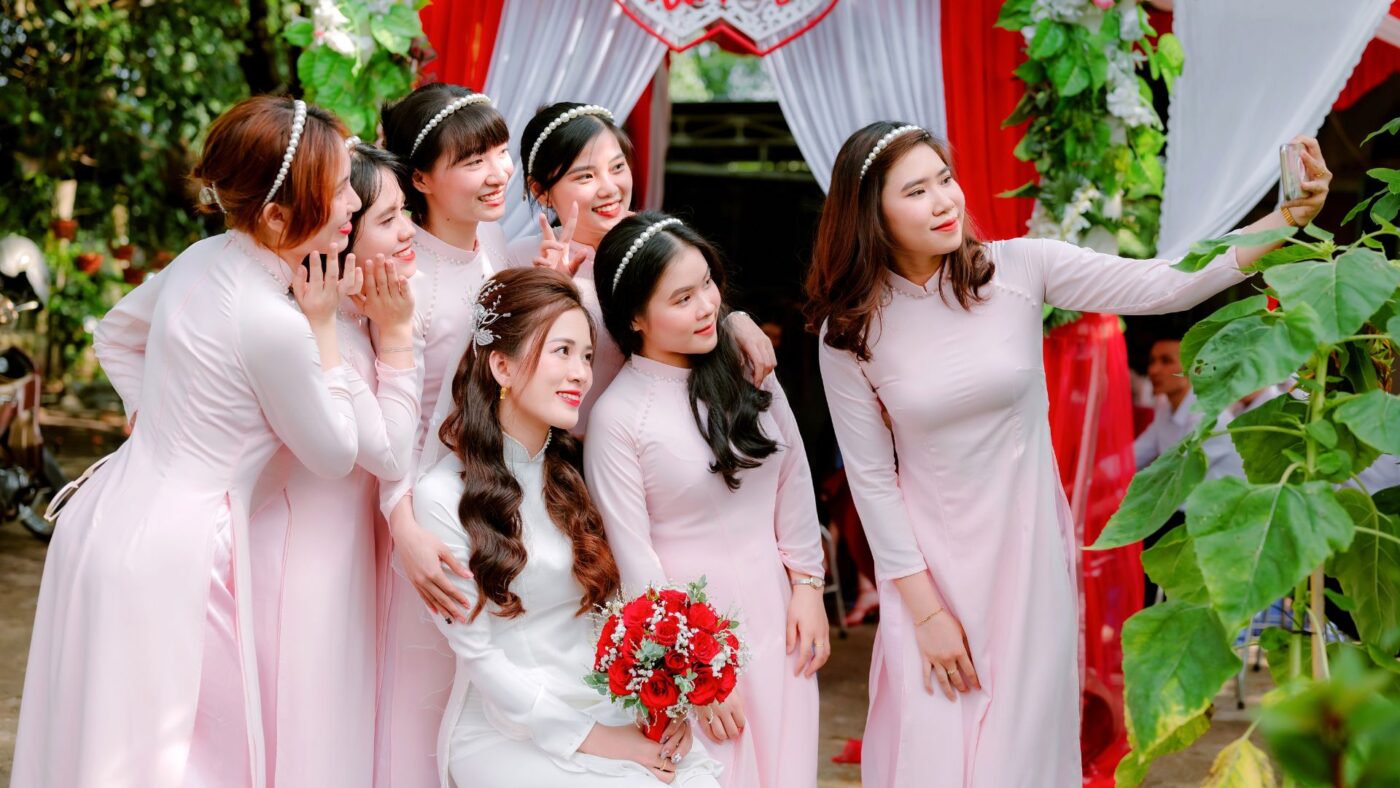
The Ao Dai continues to be a beloved Vietnamese traditional dress, bridging the gap between past and present.
Younger generations are embracing the Ao Dai in creative ways, from casual wear to high-fashion statements. It also plays a significant role in promoting Vietnam’s cultural identity to the world, making it a symbol of both heritage and innovation.
Conclusion
The Ao Dai is more than just a Vietnamese traditional dress – it is a timeless representation of the country’s history, culture, and artistry. Whether worn during formal events or modernized for everyday fashion, the Ao Dai remains a cherished part of Vietnam’s identity. If you ever have the chance, wearing an Ao Dai is a beautiful way to connect with the spirit of Vietnam and its rich traditions.


